Predicting the current and future distribution of pine woodland specialist plants in the Cairngorms National Park
DOI:
https://doi.org/10.33928/bib.2023.05.180Keywords:
species distribution modelling, pine woodland, climate change, habitat restorationAbstract
The Caledonian pine forests of Scotland have declined significantly over the past century largely due to clearance for timber, fuel and grazing land. Approximately 1% of these native pinewoods remain from their historic extent, with a stronghold in the Cairngorms National Park. Creeping Lady’s-Tresses Goodyera repens (L.) R. Br., One-Flowered Wintergreen Moneses uniflora (L.) A. Gray and Twinflower Linnaea borealis L. favour this habitat, meaning that the clearance of pine woodland has resulted in widespread declines. There are multiple plantation schemes underway in the Cairngorms to reforest the Highlands, such as Cairngorms Connect, partly with the intent of assisting the recovery of pine woodland specialists. This study uses Maximum Entropy modelling (MaxEnt) to create species distribution models (SDMs), firstly to predict the current distribution for these species; thus, enabling land managers in the Cairngorms to target surveys with the hope of finding new populations. Secondly, future distribution models are created using different emissions scenarios to predict the regions of maximum habitat suitability for the study species, with the aim of visualising where pine woodland should be planted to ensure long-term habitat viability. The results showed that there are regions in the north and east of the Cairngorms which have the highest habitat suitability, currently and in the future. The creation of habitat corridors between these two regions should be a priority to prevent isolation between populations of pine woodland specialists. The high emissions pathway could increase the likelihood of isolation by significantly decreasing the habitat suitability between the most suitable areas.
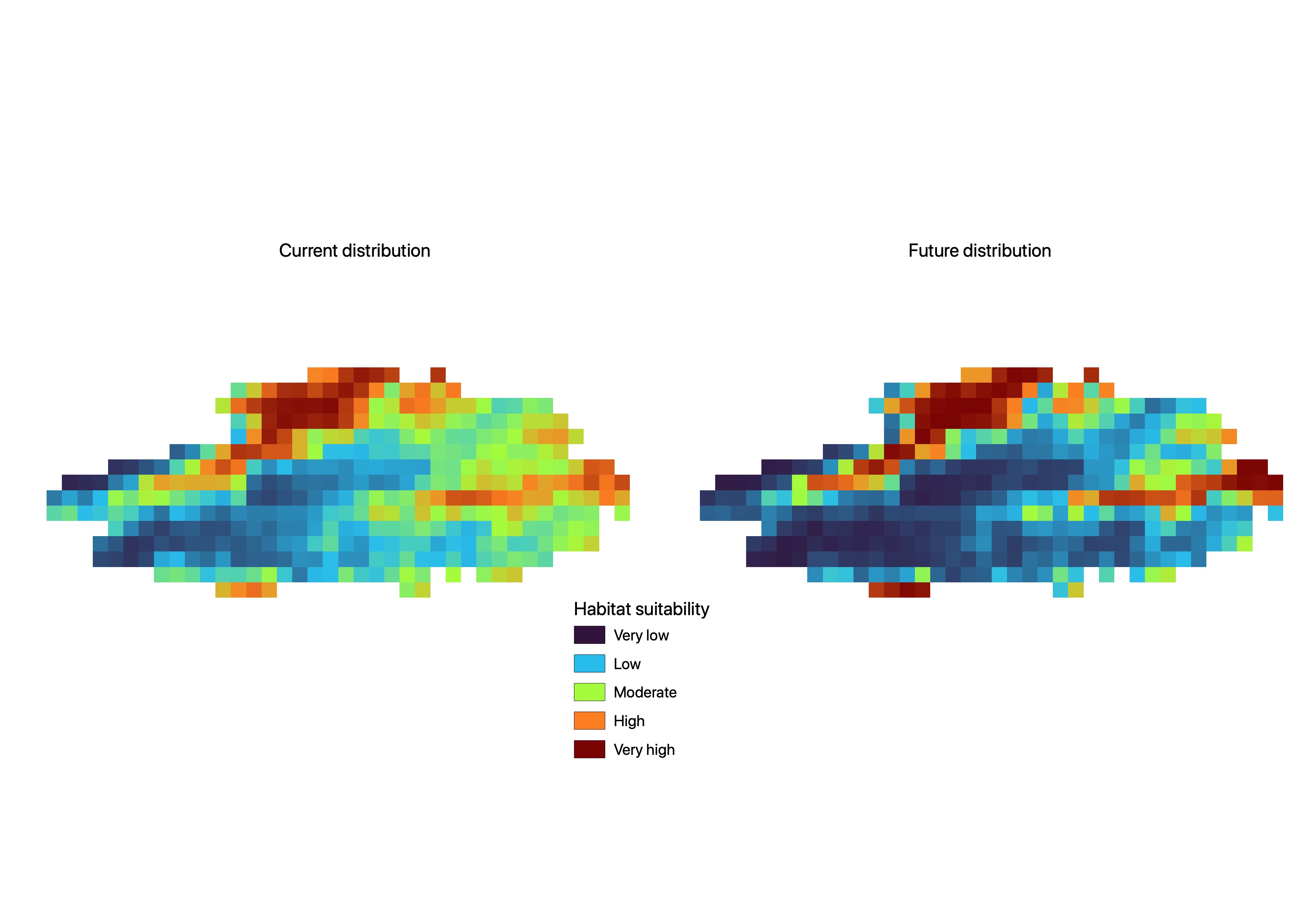



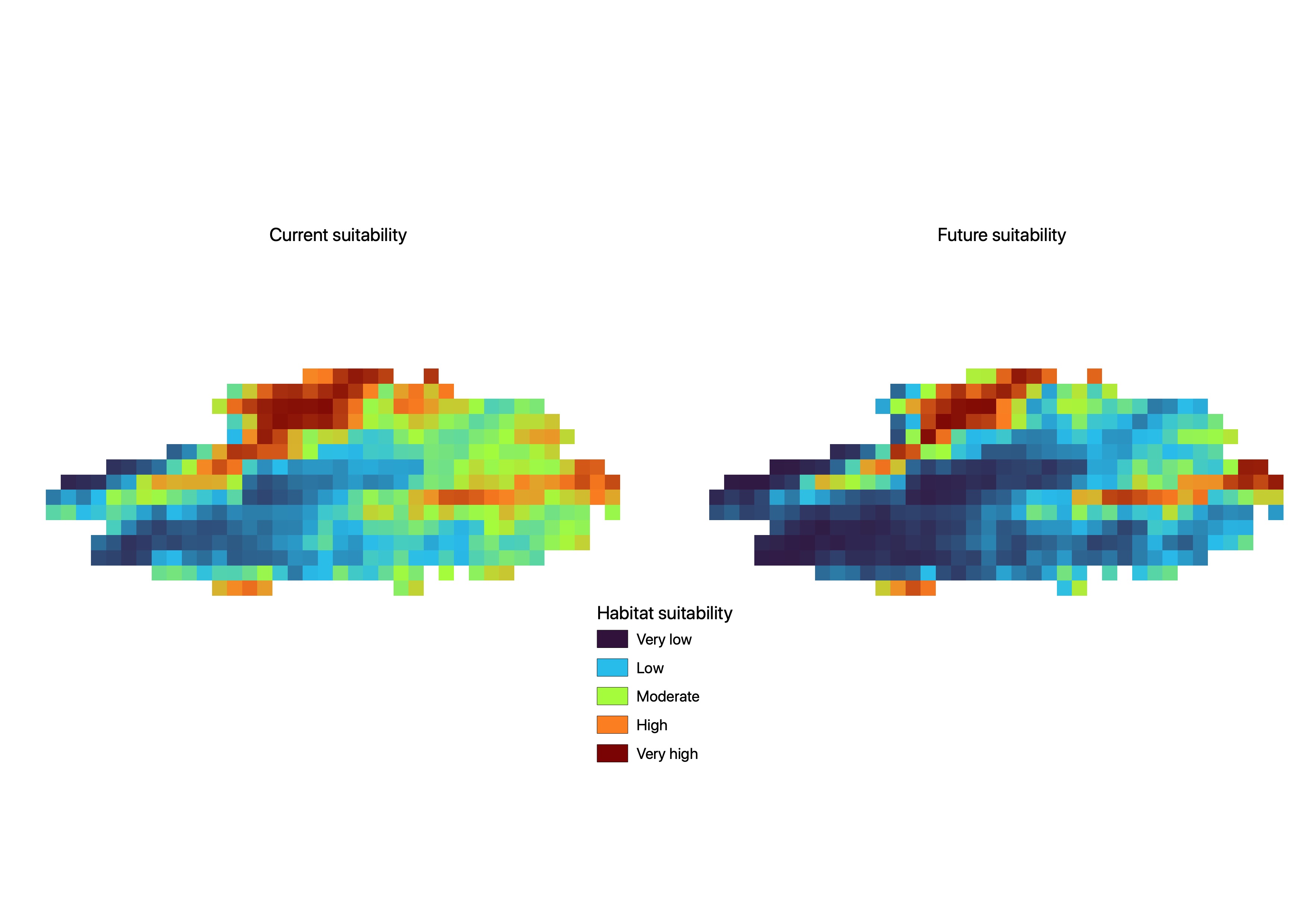
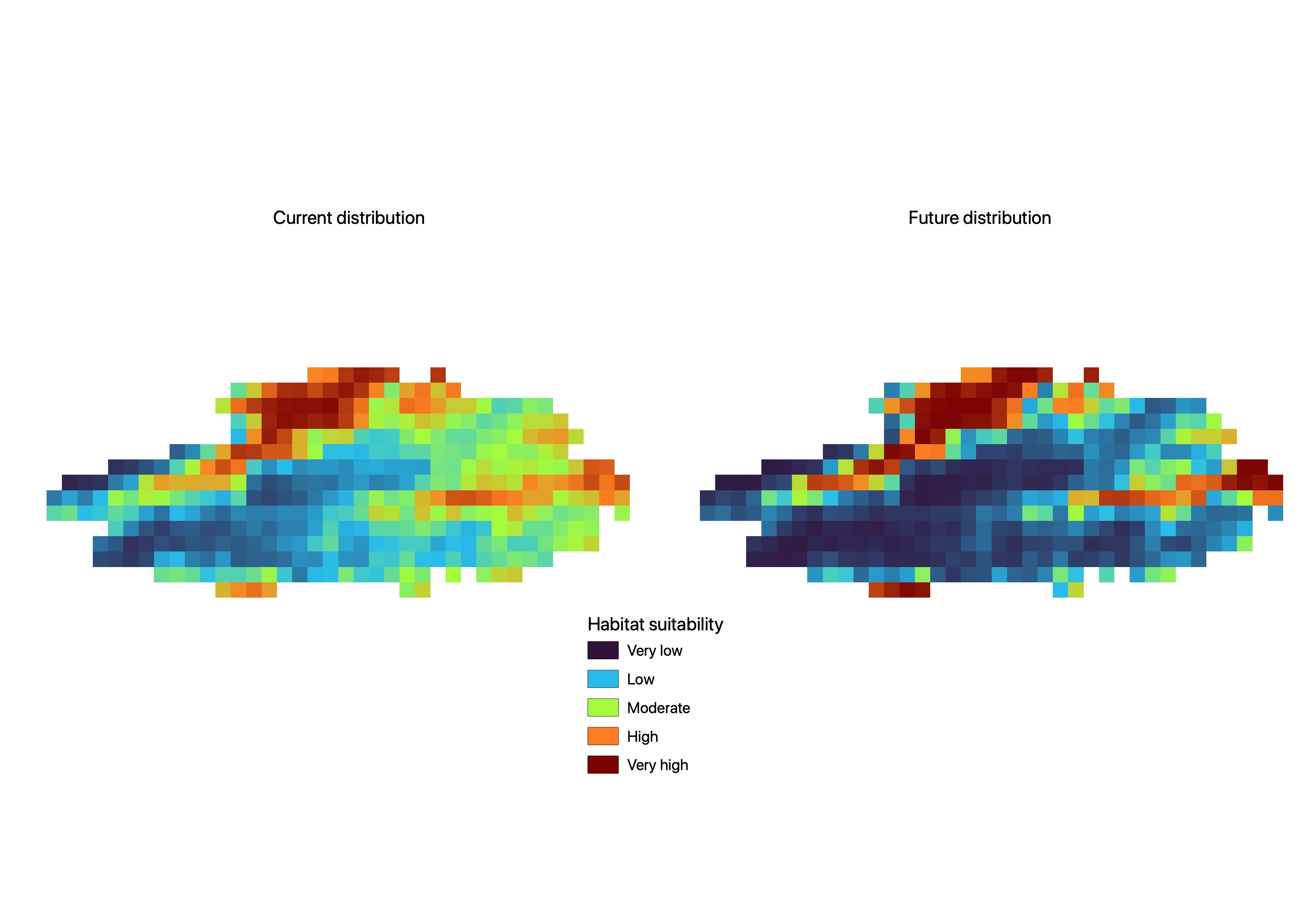

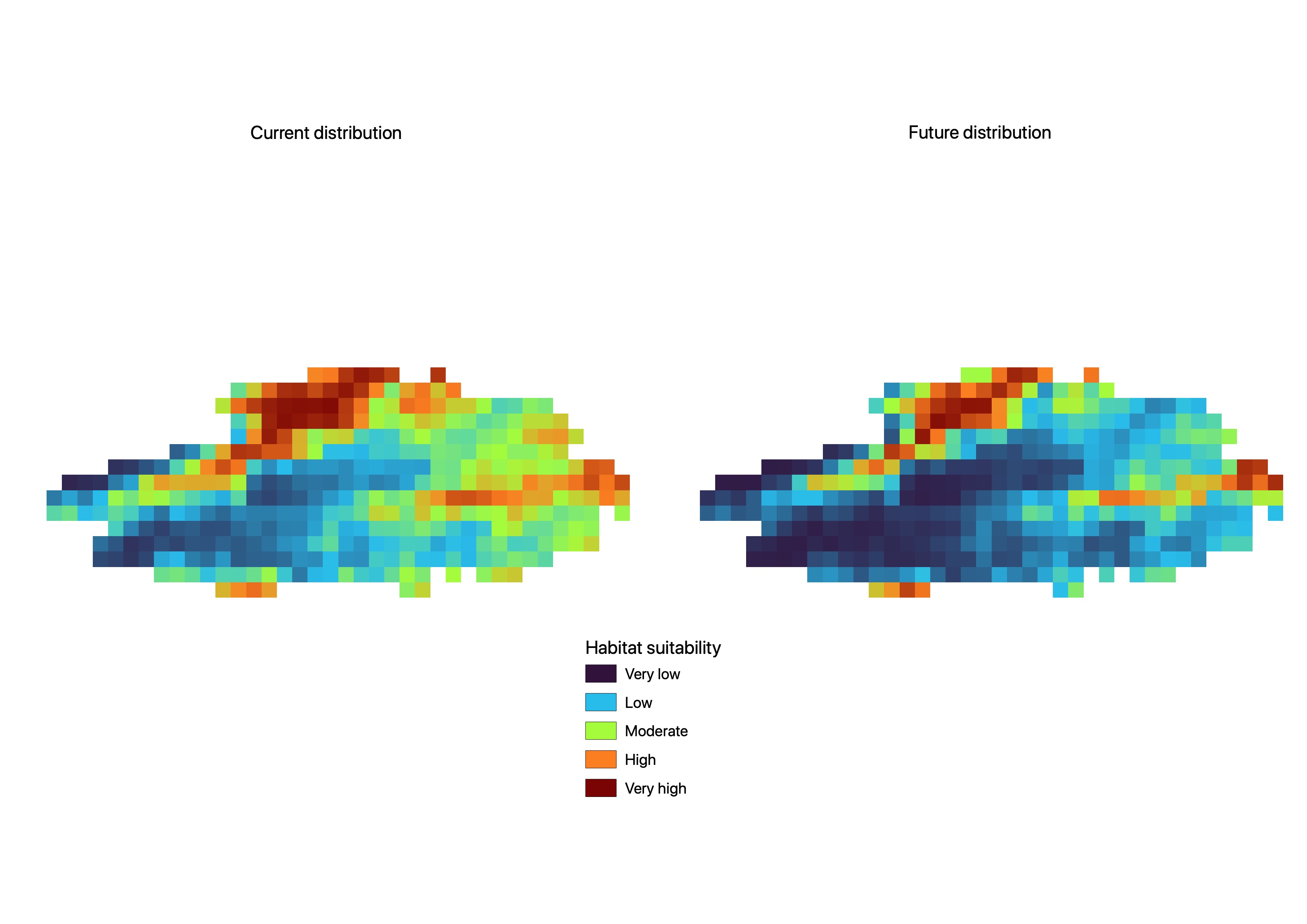

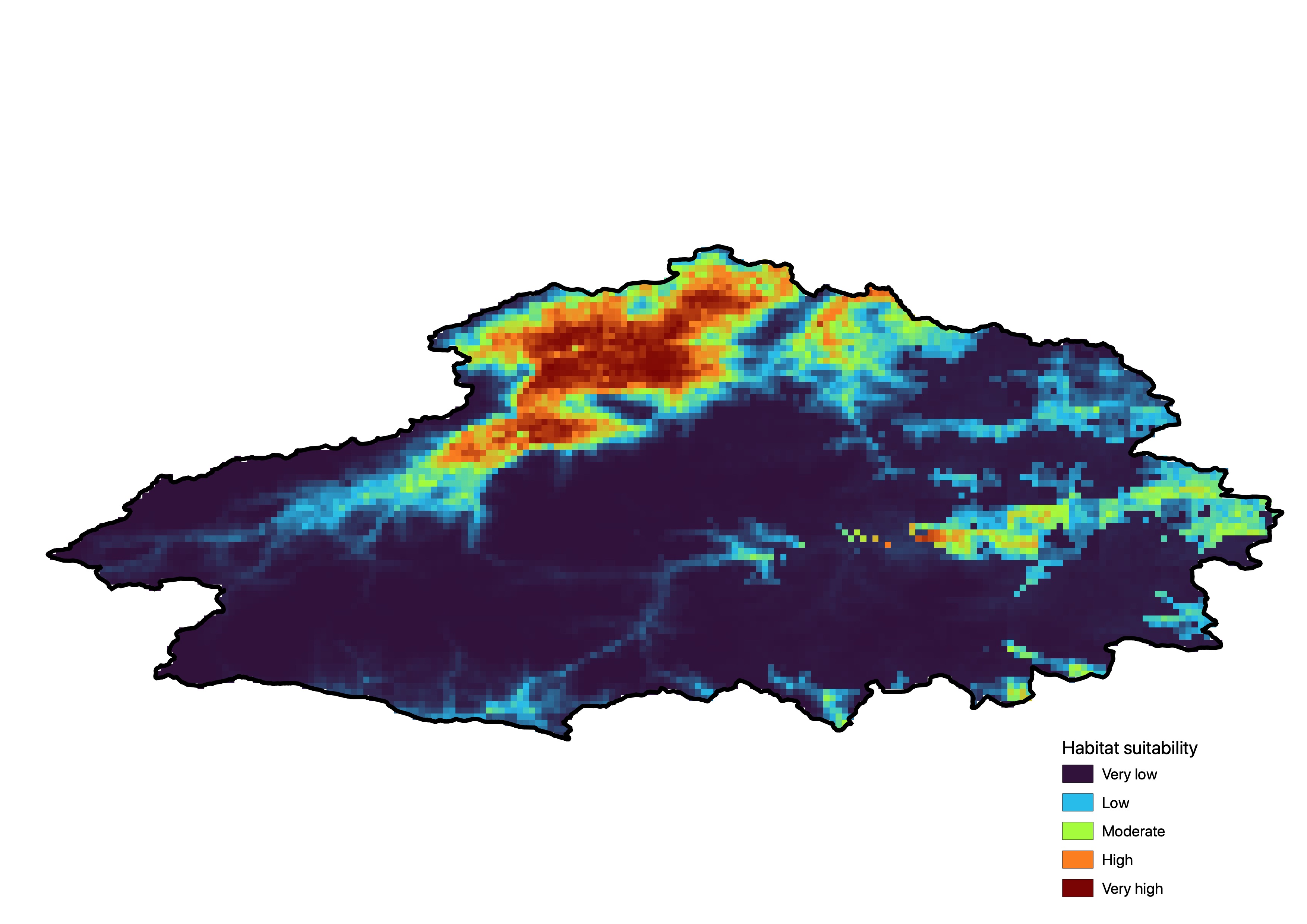

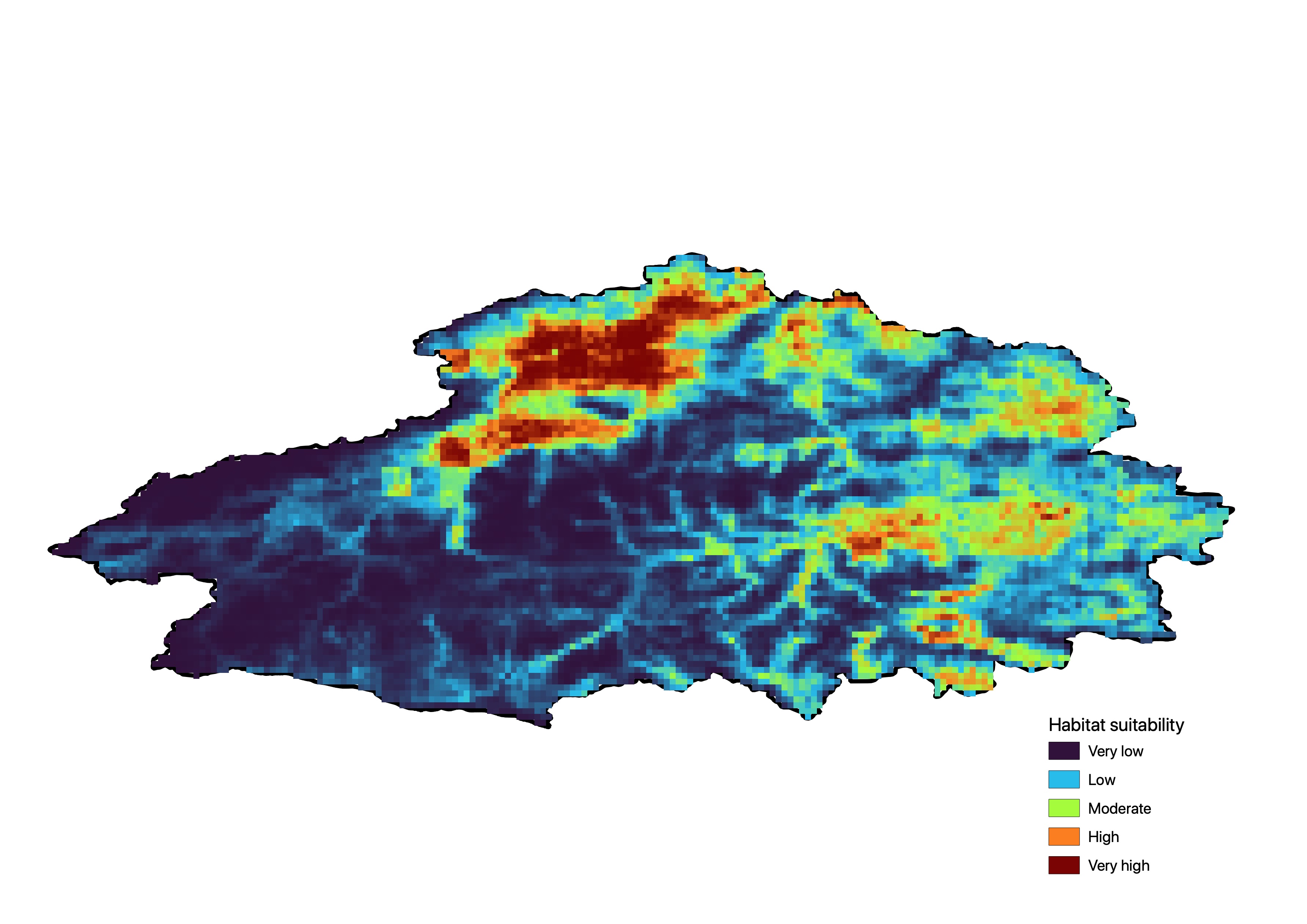
Downloads
Published
Issue
Section
License
Copyright (c) 2023 Joshua Evans, Andrew Carr

This work is licensed under a Creative Commons Attribution 4.0 International License.
Copyright and licence: Authors (or their employers) retain their copyright in articles and images published in British & Irish Botany and are not required to assign this to the Botanical Society of Britain & Ireland (BSBI). All that BSBI requires from authors is a license to publish the article in British & Irish Botany and make it freely available to all in pdf format under the terms of Creative Commons Attribution 4.0 International Public License, which also enables BSBI to reproduce components of the article in other BSBI outputs (eg. BSBI News, the BSBI website and/or the BSBI News & Views blog) for publicity purposes. The licence code can be accessed here:

